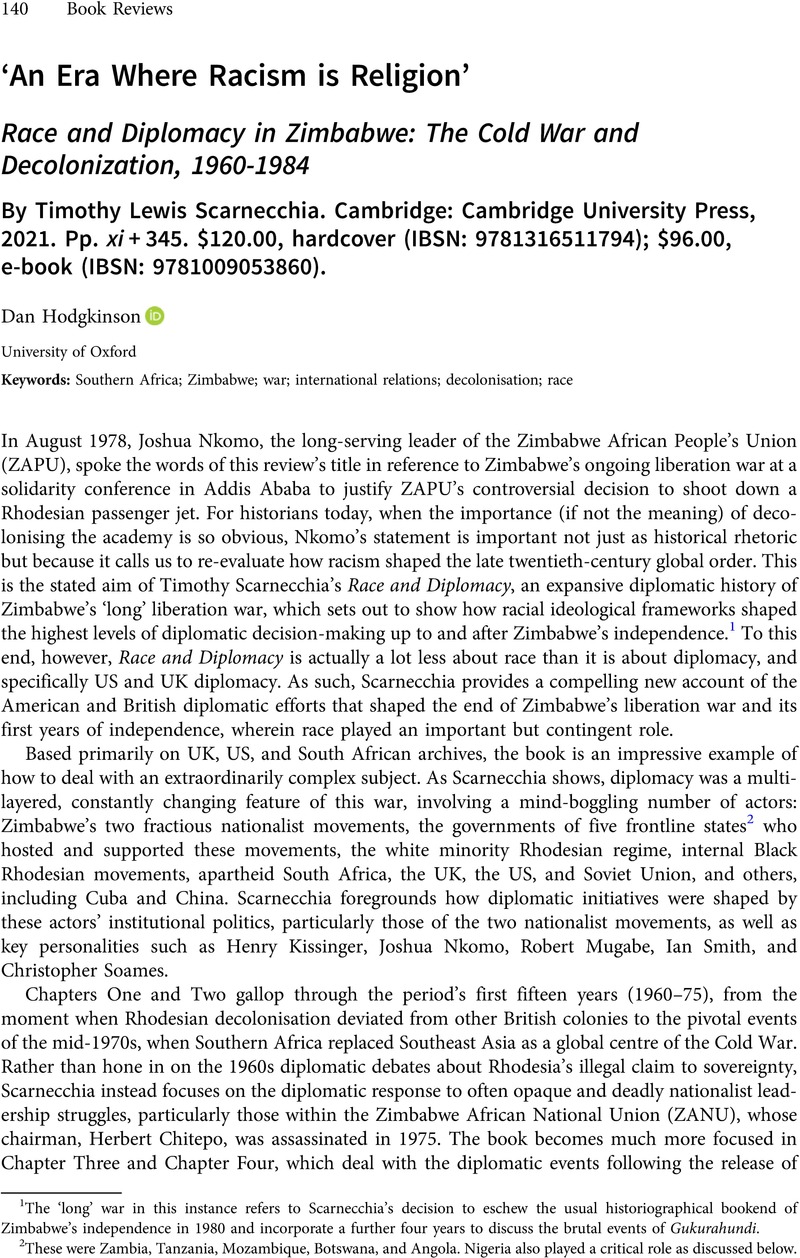No CrossRef data available.
Article contents
‘An Era Where Racism is Religion’ - Race and Diplomacy in Zimbabwe: The Cold War and Decolonization, 1960-1984 By Timothy Lewis Scarnecchia. Cambridge: Cambridge University Press, 2021. Pp. xi + 345. $120.00, hardcover (IBSN: 9781316511794); $96.00, e-book (IBSN: 9781009053860).
Review products
Published online by Cambridge University Press: 17 February 2023
Abstract

- Type
- Book Review
- Information
- Copyright
- Copyright © The Author(s), 2023. Published by Cambridge University Press
References
1 The ‘long’ war in this instance refers to Scarnecchia's decision to eschew the usual historiographical bookend of Zimbabwe's independence in 1980 and incorporate a further four years to discuss the brutal events of Gukurahundi.
2 These were Zambia, Tanzania, Mozambique, Botswana, and Angola. Nigeria also played a critical role as discussed below.
3 Indeed, the use of MiG jets in Angola were part of ZAPU's strategy to militarily end the war using conventional forces.
4 The British Military Advisory and Training Team.
5 Roberts, G., Revolutionary State-Making in Dar es Salaam: African Liberation and the Global Cold War, 1961-74 (Cambridge, 2021)CrossRefGoogle Scholar; Freedman, L., Kennedy's Wars: Berlin, Cuba, Laos, and Vietnam (Oxford, 2000)Google Scholar.
6 For military events, for instance, see Tendi, M., The Army and Politics in Zimbabwe: Mujuru, the Liberation Fighter and Kingmaker (Cambridge, 2020)CrossRefGoogle Scholar.



